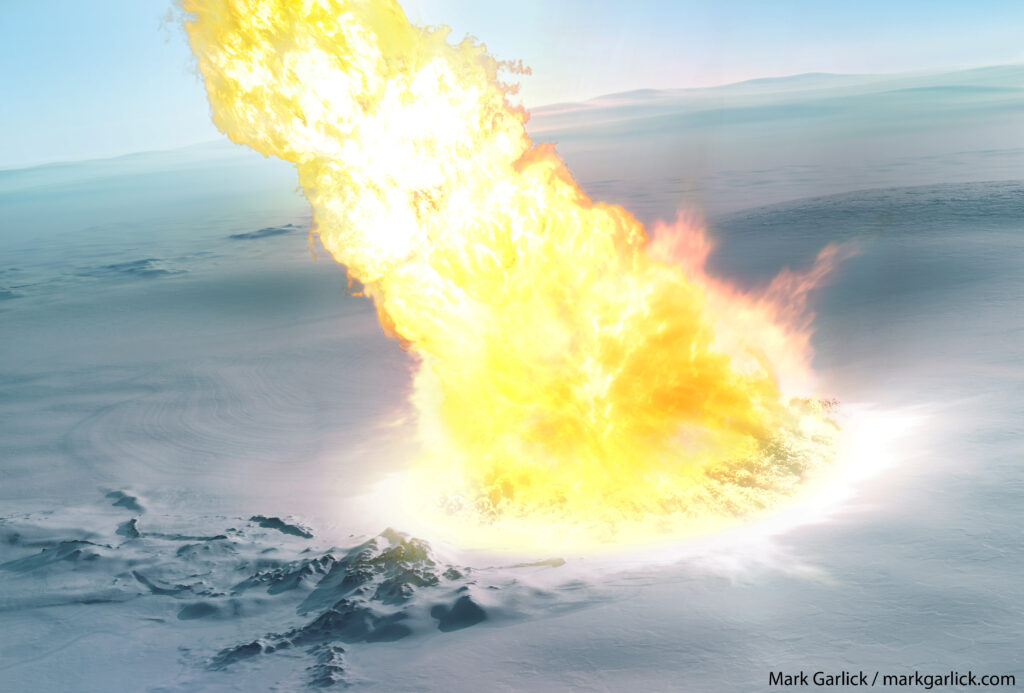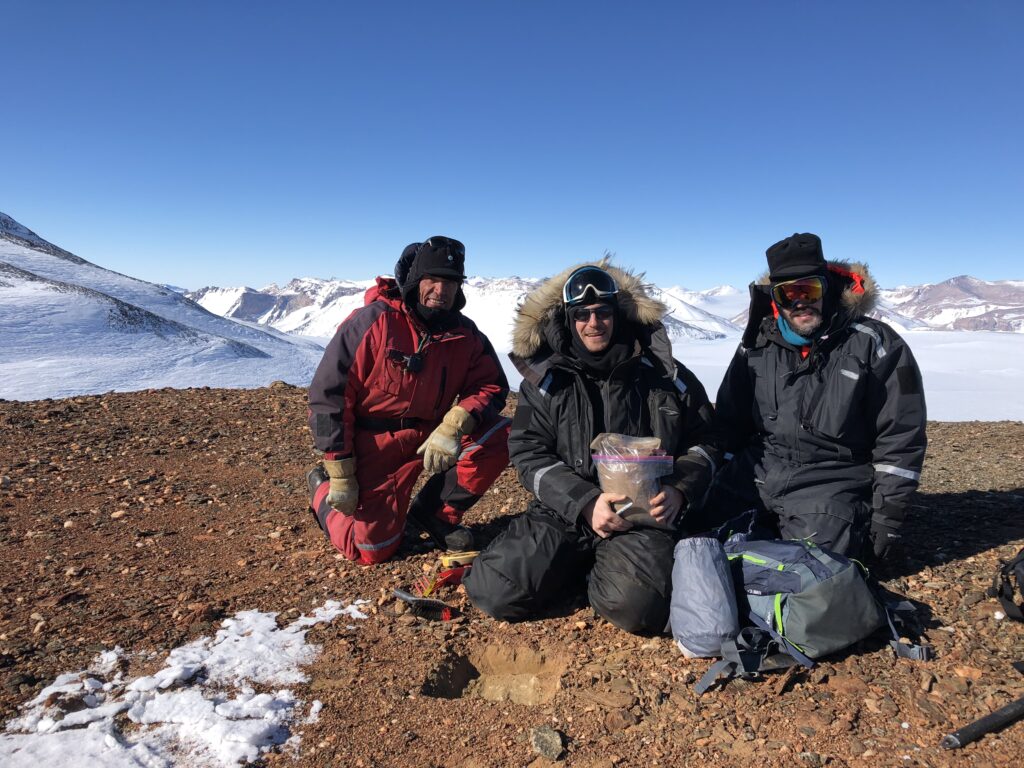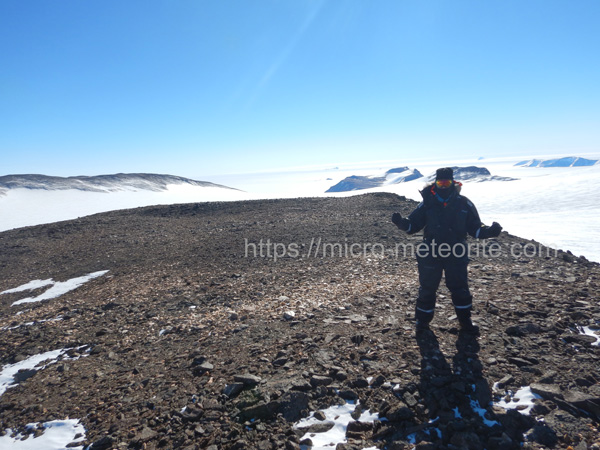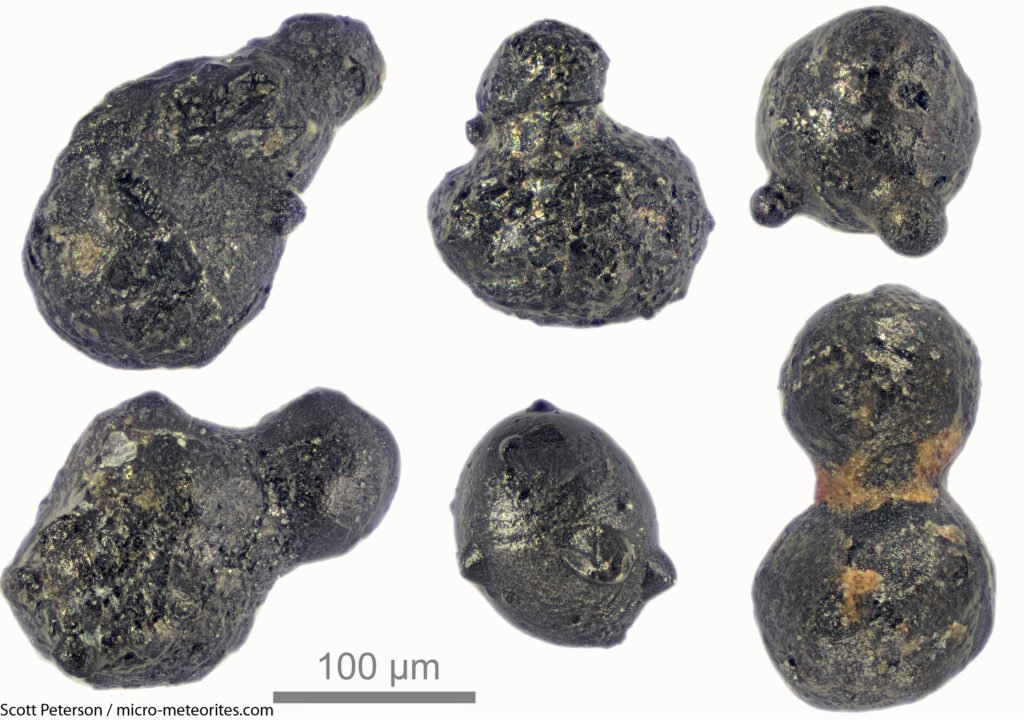
A new paper of mine was recenlyt published in Science Advances and result directly from the 2017-2018 BELAM (Belgian Antarctic Meteorites) expedition I participated to, along with colleague Steven Goderis from the Vrije Universiteit Brusell.
The paper is freely available here.
This paper reports the discovery of impact particles on top of Walnumfjellet in the Sør Rondane Mountains, Queen Maud Land, Antarctica. The aim of the expedition was to look for micrometeorites on top of nunataks and moraines around the Princess Elisabeth Antarctic station.
While looking over satellite maps of the loca area together with Steven, we quicky realized that Walnumfjellet was the perfect spot to find micrometeorites. Its surface looked flat, close to the Antarctic plateau and especially very old. Alas, it was also very far from the station… Thankfully, Alain Hubert, who manages the station, came to our help since he knew the area very well. Together with our top field-guide Raphaël Mayoraz, he guided us there. Seventy kilometres on our snowmobiles! A very long trip it was. But once there, it took no time at all for me and Steven to understand that this was a goldmine! Not only did the surface look old, but it was also covered with very fine grained material, result of rocks being crushed by a glacier hundreds of thousand years ago. A perfect surface to trap anything falling from the sky. In our enthousiasm, we sampled six kilograms of material with our small shovel.
Back to the station with this treasure, I quickly went to the lab to look through a small sample using a microscope. Micrometeorites couldn’t wait! It took approximatelly zero minute for me to find one! One tiny particle of cosmic material! And another one! And another one! And so it went for a while… Before something totally unexpected happened. There it was. A tiny particle that didn’t look like a terrestrial grain, but nor did it look like a micrometeorite either. It was staring at me defiantly, daring me to figure out what it was! Little did it know that I had studied impact particles back during my PhD back in Italy (I would like to take this opportunity to thank Prof Luigi Folco, forever my mentor). Shock and happiness filled my eyes with tears. I had just found the remnants of a meteoritic impact!
But this was just the first step in a long study aiming at figuring out how and when this impact particles formed. The rest of the story is in the paper mentioned above.
Here is a photo of Alain Hubert, Steven and me on top of Walnumfjellet. Credit: Raphaël Mayoraz.


Image above: I could not hide my joy on top of Walnumfjellet. Credit: Steven Goderis
This story would not be complete without a picture of some of these fantastic particles! Credit: Scott Peterson / micro-meteorites.com

The press coverage following the release of the paper has been international and massive, with hundreds of reports in many different countries.
But first, the press release from the University of Kent that started it all!
And now some example of news from major media outlets:
And reports in the international press!
- RTL (Belgium)
- De Volkskrant (Netherlands)
- Sorae (Japan)
- Ria Novosti (Russia)
- La Capital (Argentina)
- El Heraldo de México (Mexico)
- Kompas (Indonesia)
- Báo Lao Động (Vietnam)
- National Geographic (Hungary)
- National Geographic (Spain)
- The Nation (Pakistan)
- Южная правда (Ukraine)
- TVN 24 (Poland)
- Canaltech (Brasil)
- Il Corriere della Sera (Italy)
- Astro Awani (Malaysia)